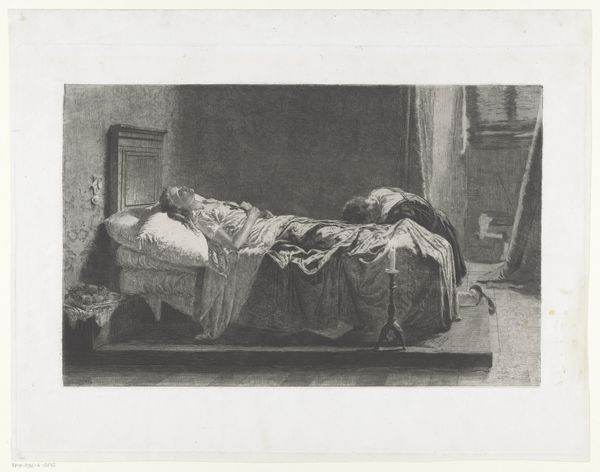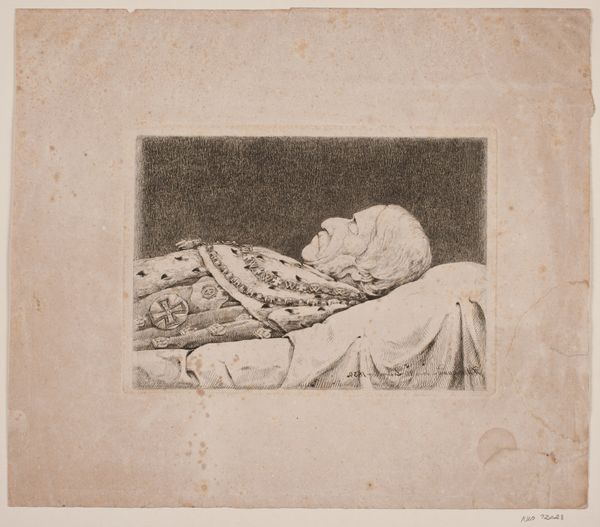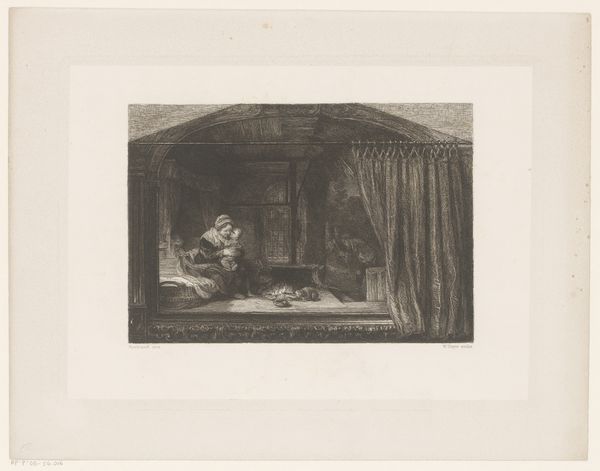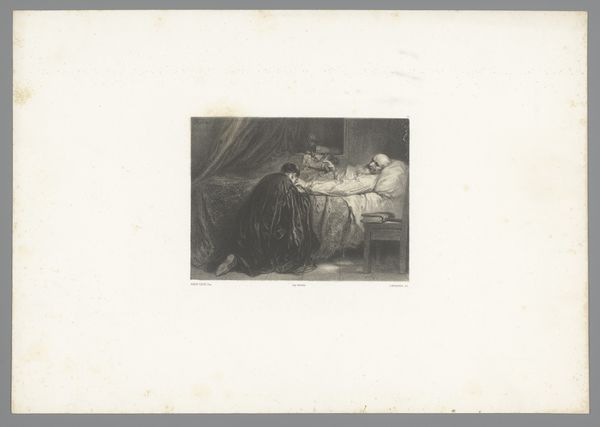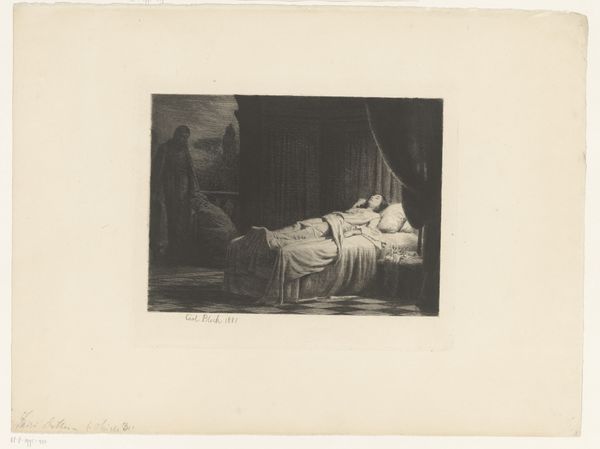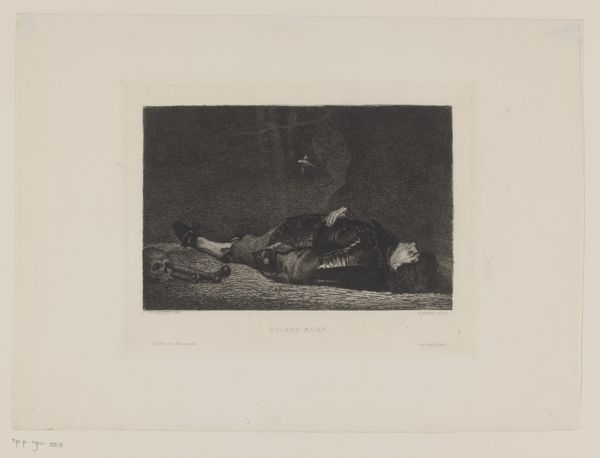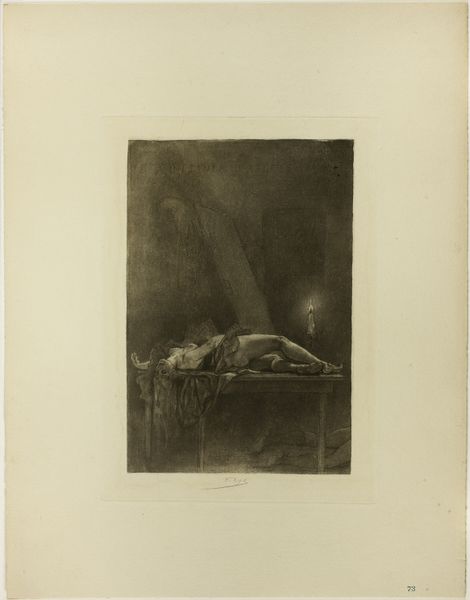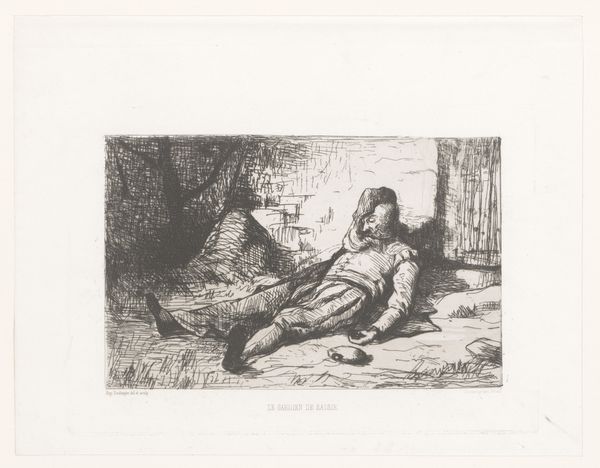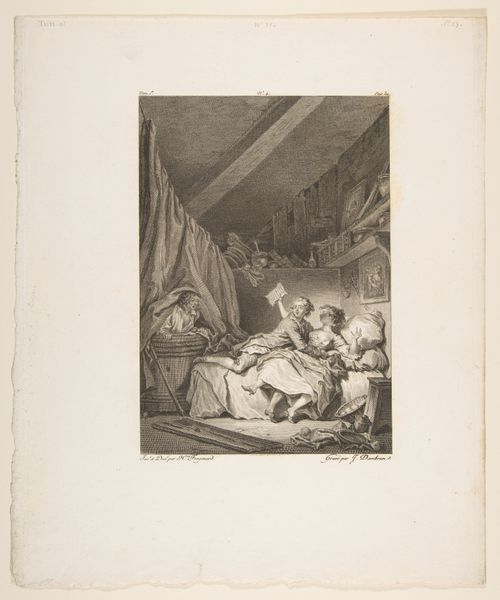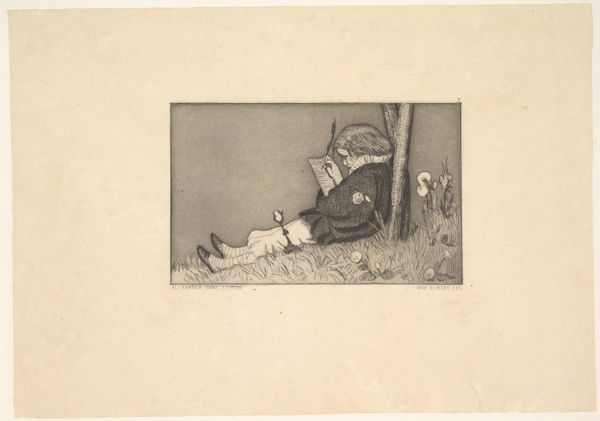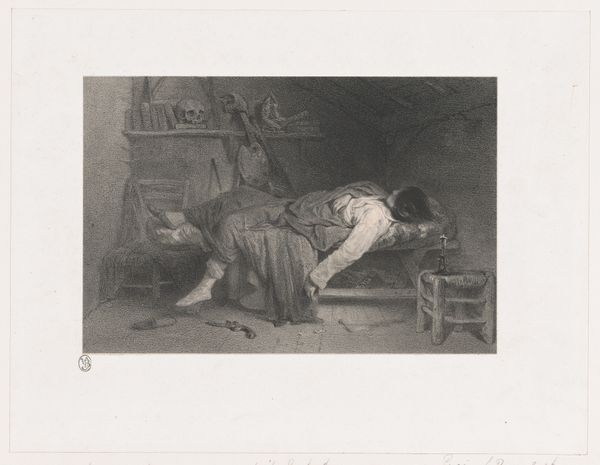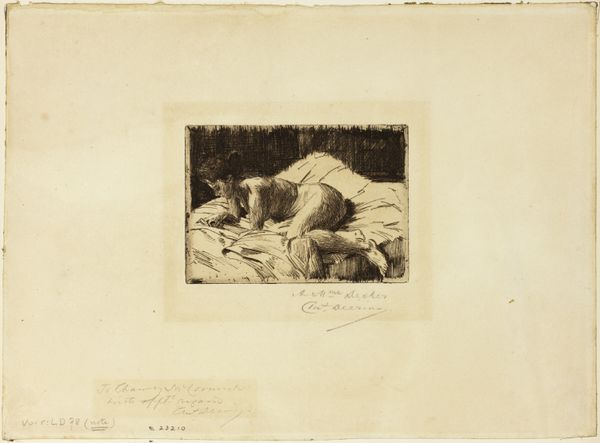
drawing, print, engraving
#
photo of handprinted image
#
drawing
#
aged paper
# print
#
genre-painting
#
engraving
#
realism
Dimensions: height 268 mm, width 348 mm
Copyright: Rijks Museum: Open Domain
Curator: Here we have "Twee jachthonden," or "Two Hunting Dogs," an engraving made sometime between 1847 and 1865. The artist is Adolf Carel Nunnink, and it resides here at the Rijksmuseum. Editor: It's remarkably still. You get this very domestic, calm vibe even though the dogs and the setting are linked with hunting, usually quite an active pursuit. There's a subtle contrast there that I find really engaging. Curator: The stillness, I think, is carefully constructed. It is of its time, part of a broader tendency within genre-painting towards sentimental domestic scenes and the rising prominence of the bourgeois in Dutch society. Editor: Definitely. These genre paintings often omit the difficult aspects of life, like poverty, or in this case, the potential cruelty of the hunt. We get a curated image of country life. Do you think that affects the viewer's response today? Curator: I believe so. These representations played a significant role in shaping the public's perception and expectations regarding class and social mores. You have a specific power dynamic expressed through animals. A codification of human control, ownership and by extension, class hierarchies. Editor: Right. The hunting dog as status symbol. But isn’t there also a sense of vulnerability in the dogs’ relaxed poses? The one in the foreground looks utterly at ease, almost unaware. Maybe Nunnink is trying to show something more. Curator: Perhaps. The level of detail he achieves through engraving gives it a real sense of intimacy, drawing the viewer into their world, inviting empathy. But ultimately it perpetuates specific values related to ownership, class, and human-animal relations. Editor: It's interesting how these layers co-exist, that these scenes are beautiful but rooted in ideologies. Understanding this interplay is so important, it reveals the values the art actively promoted. It is in line with the long history of artists getting in bed with those in power. Curator: Indeed. By acknowledging the underlying framework that allowed these paintings to thrive, we get closer to a balanced perception of the works and society. Editor: So, while appreciating Nunnink's skills, it is valuable to discuss the circumstances that shaped and gave relevance to this kind of piece. That allows the audience to be more insightful when looking at it, don't you think?
Comments
No comments
Be the first to comment and join the conversation on the ultimate creative platform.
